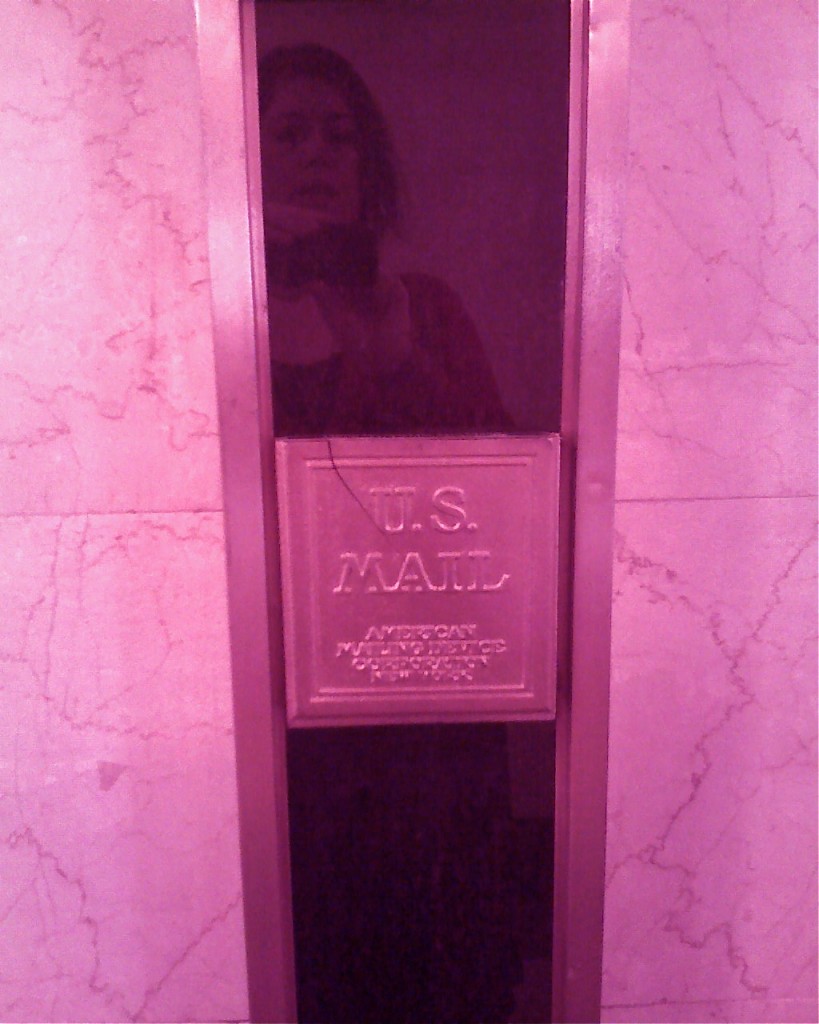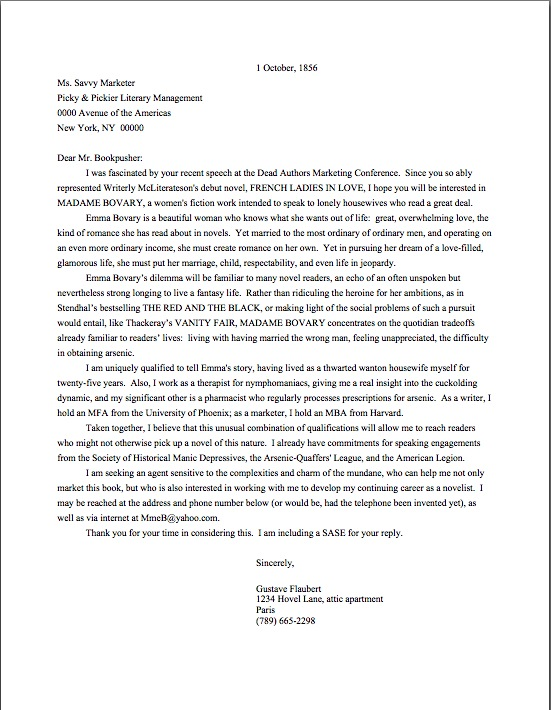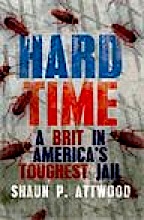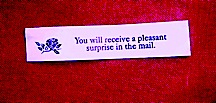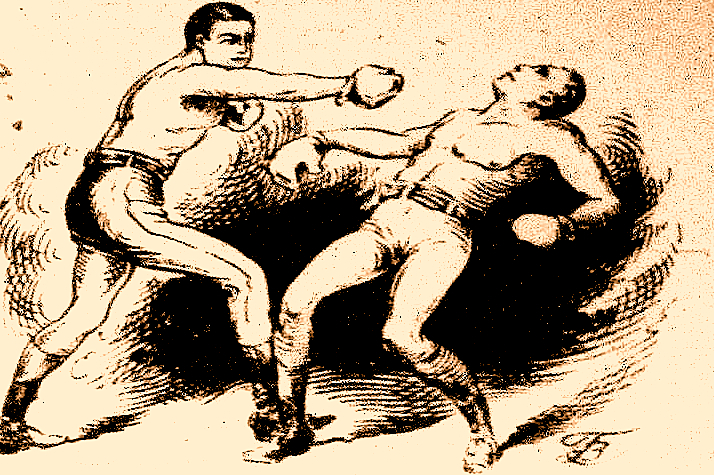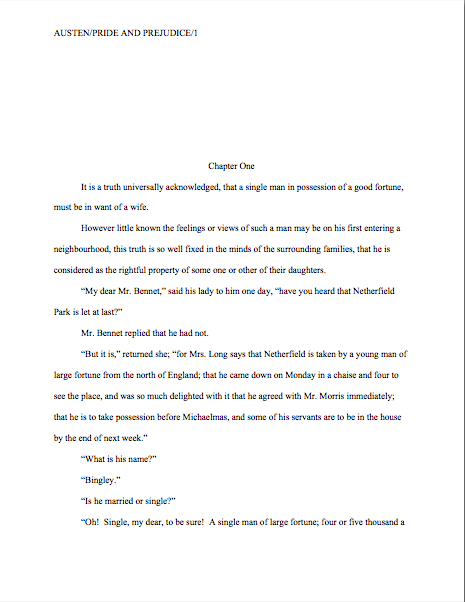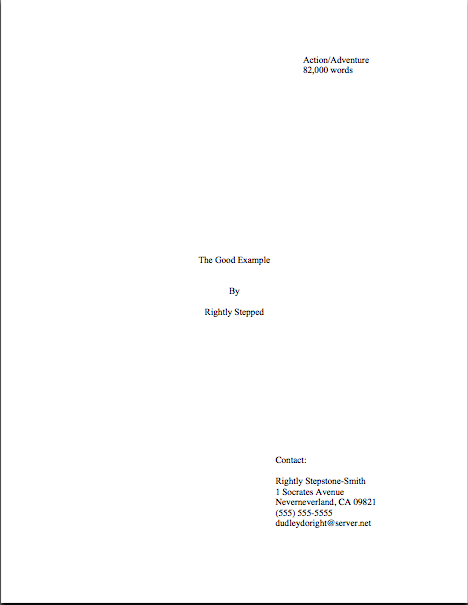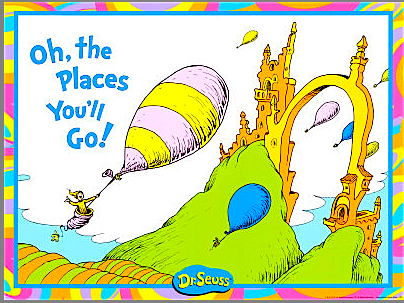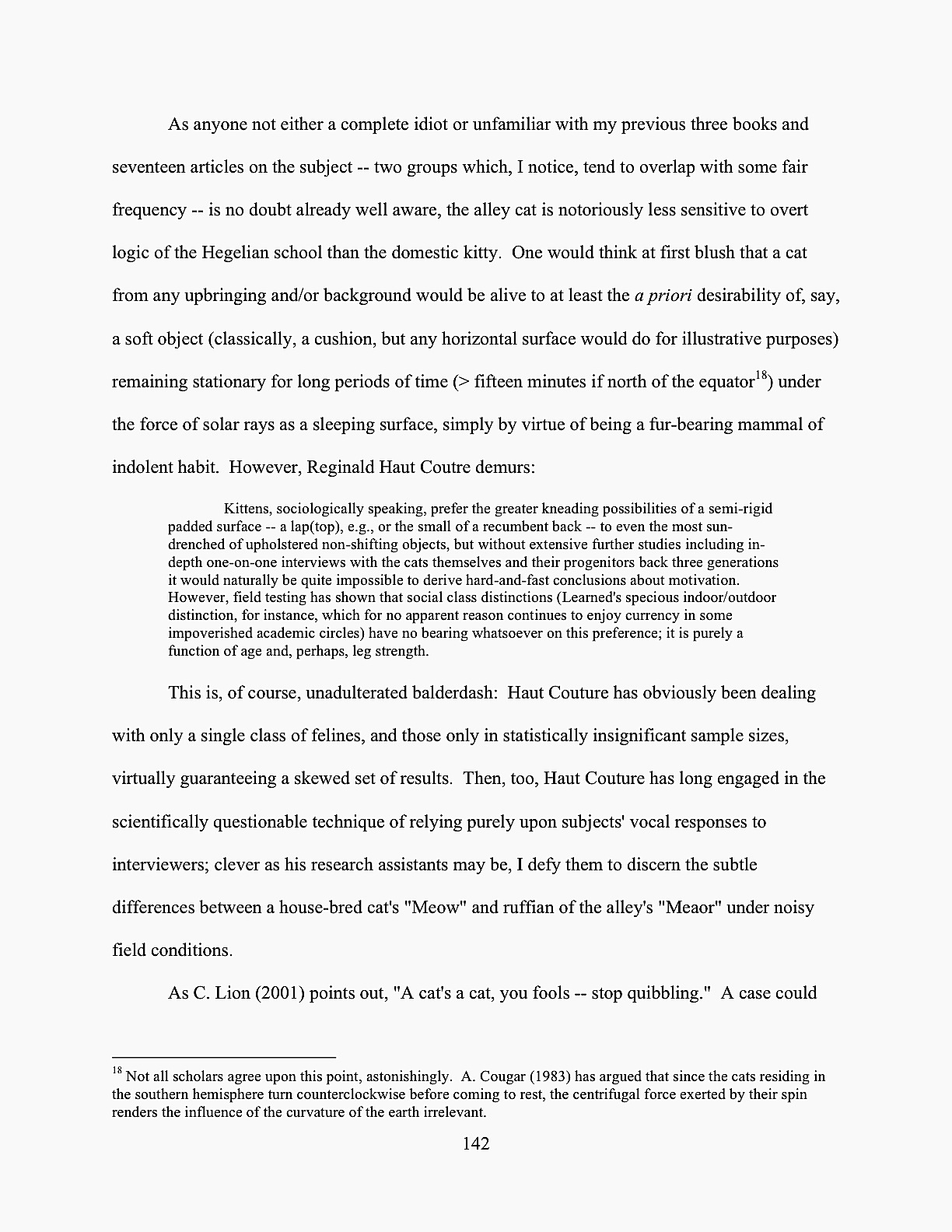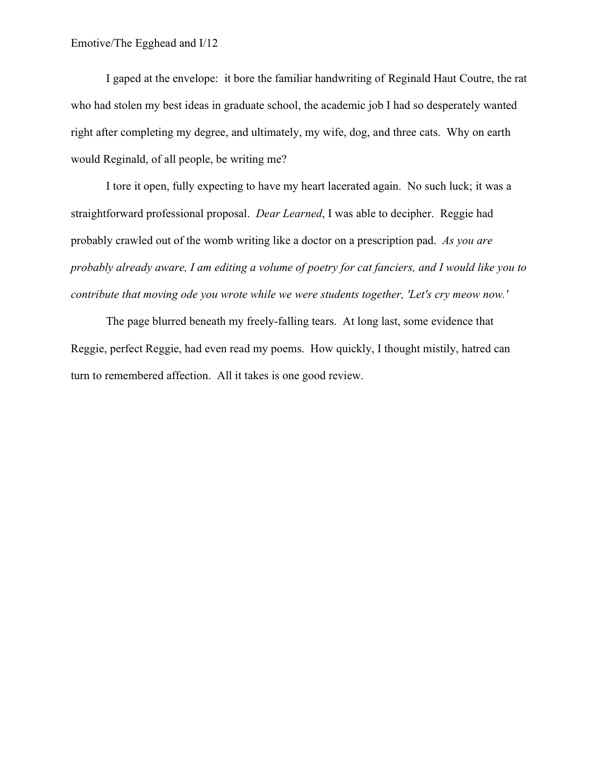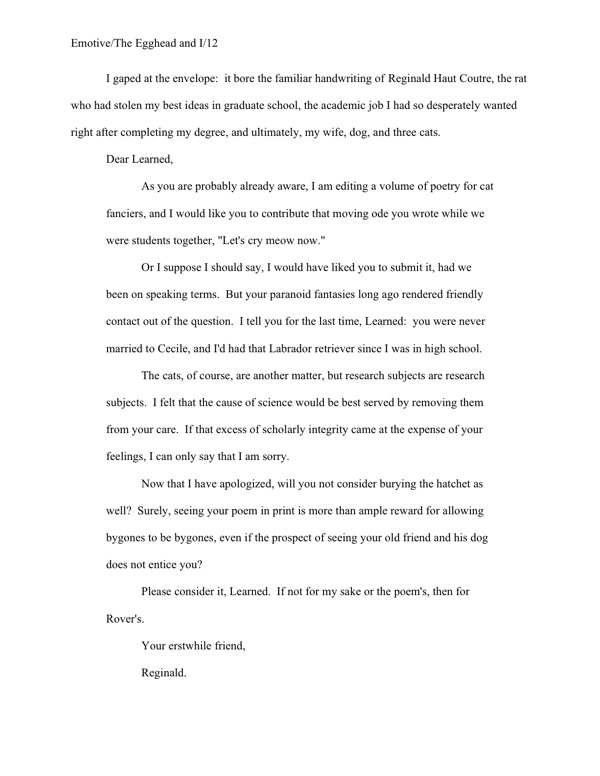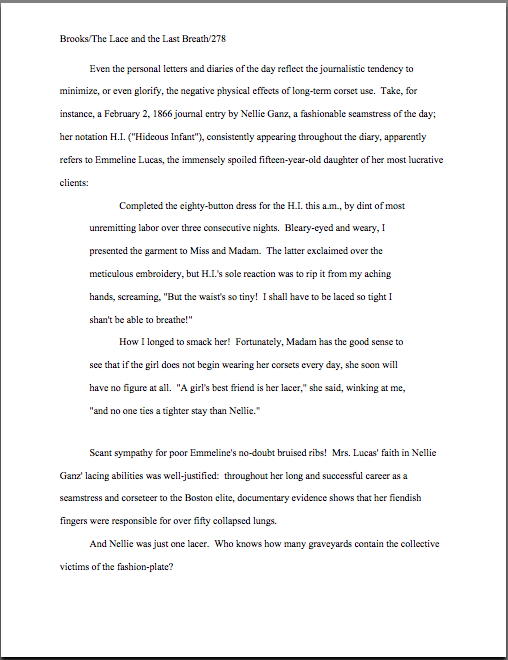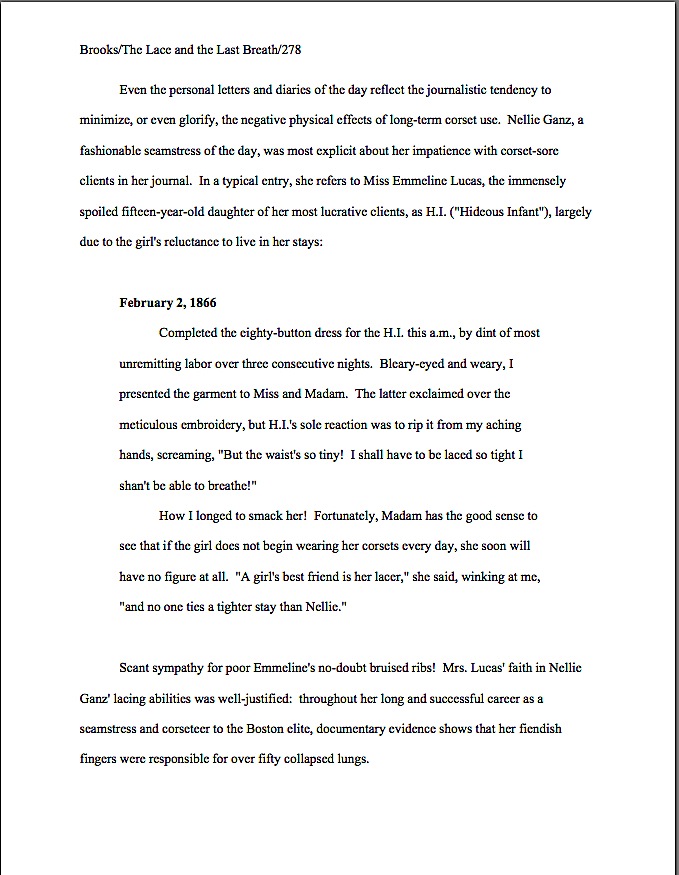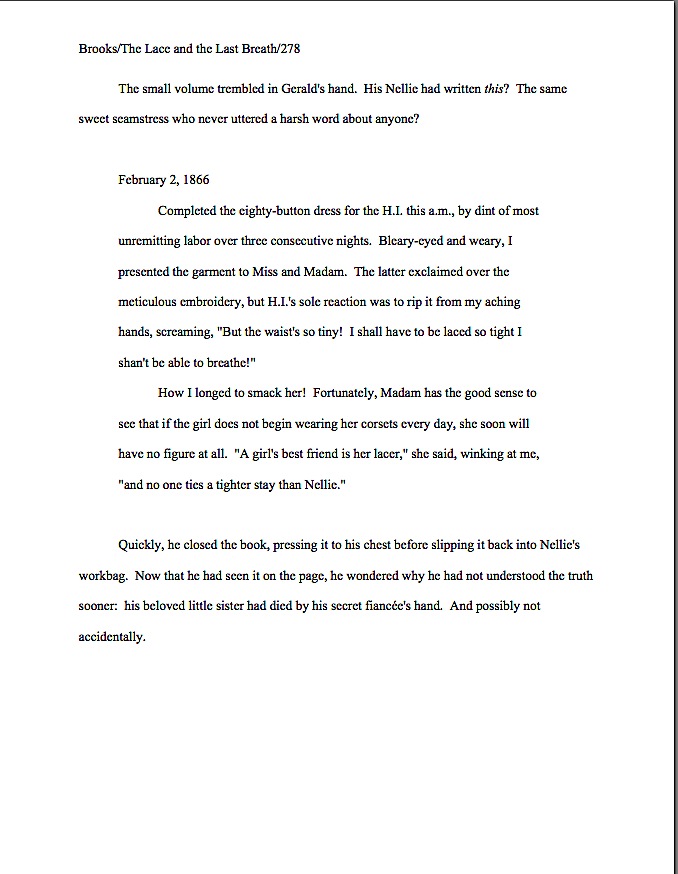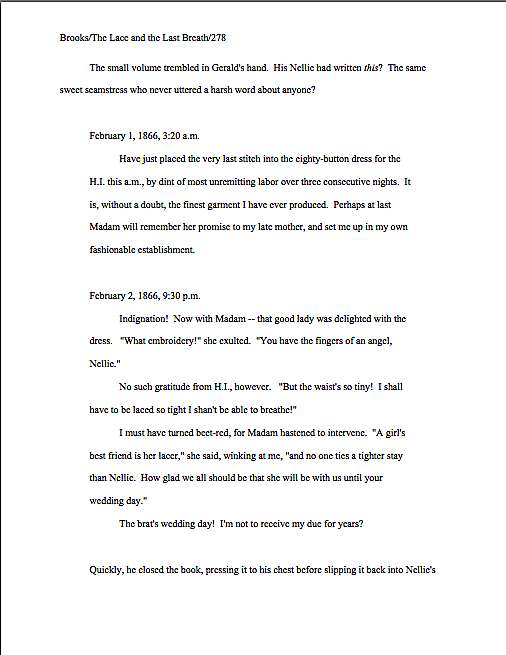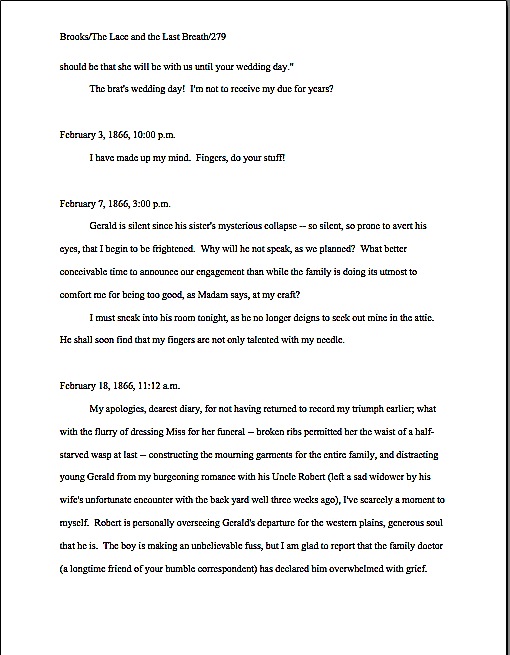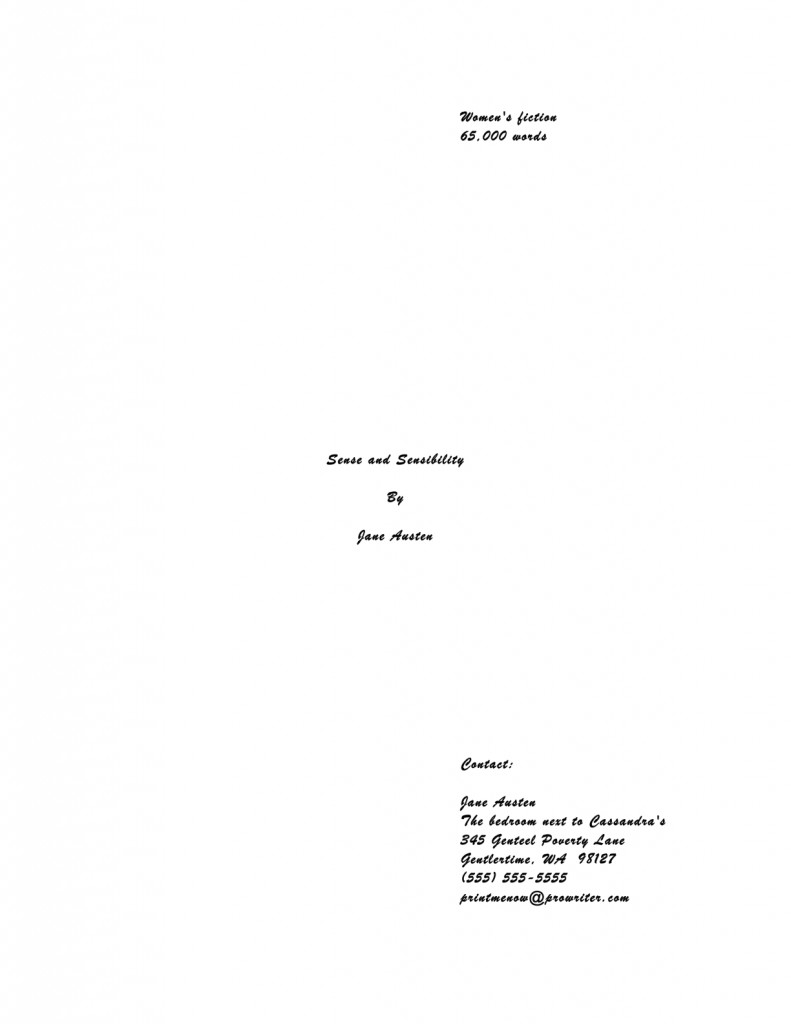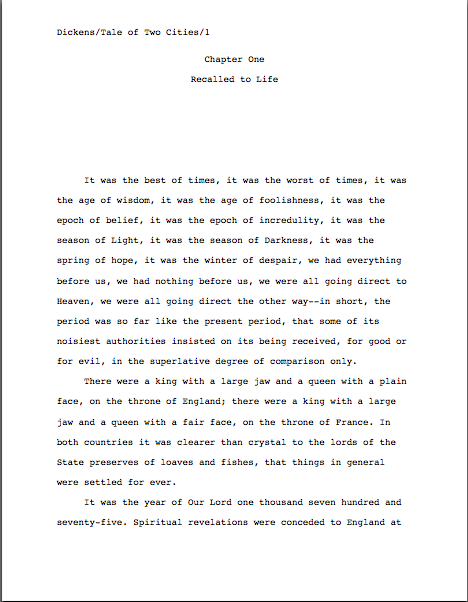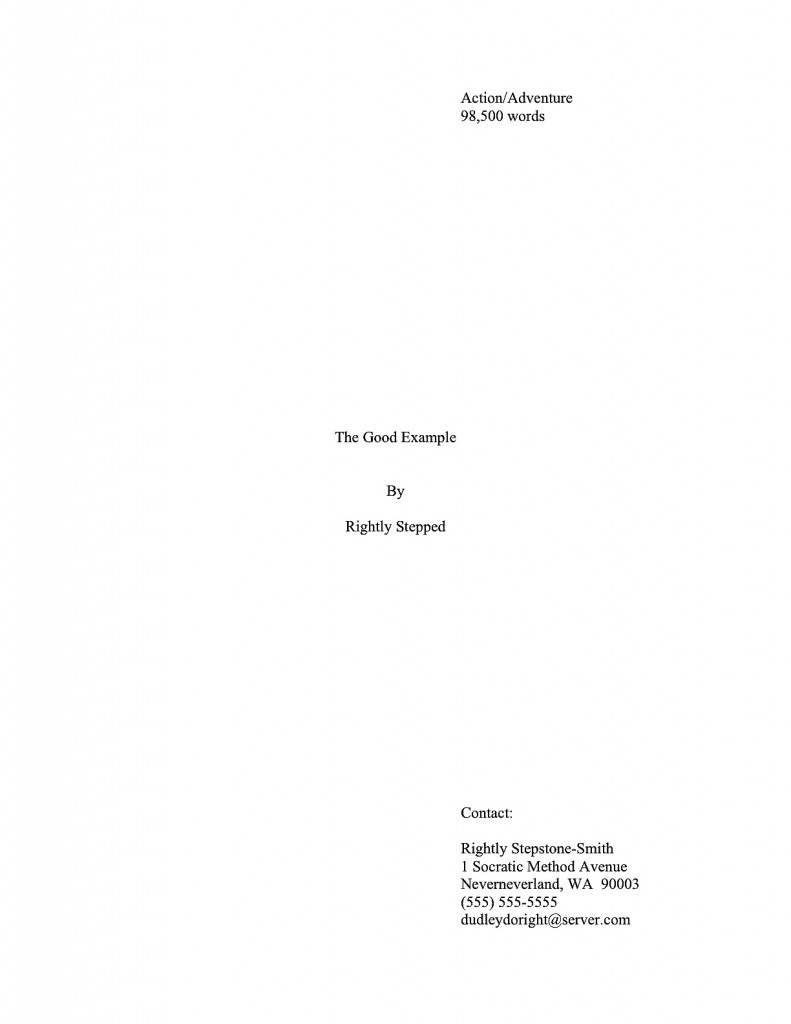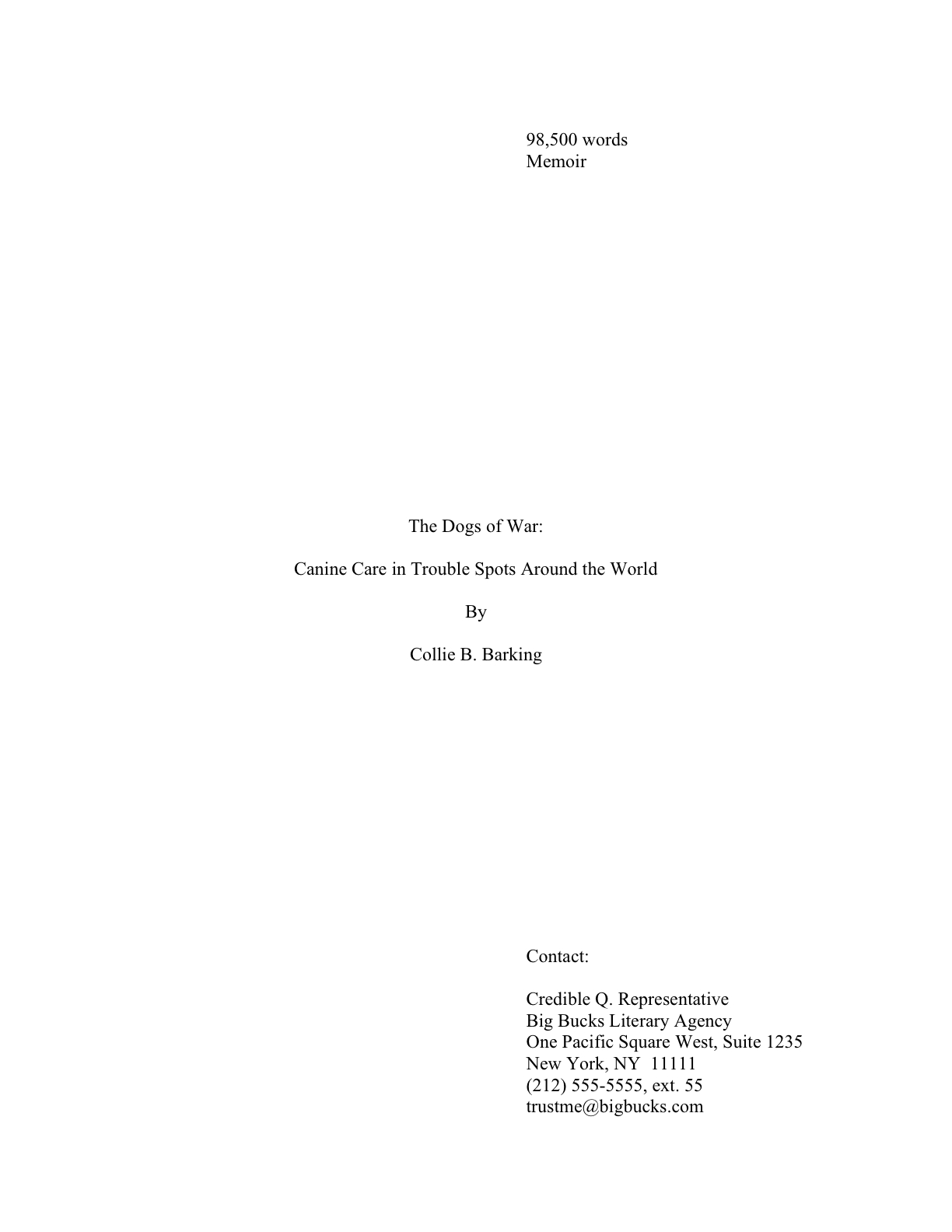Okay, I admit it: I’m being a bit inconsistent today. Last night, I got so carried away talking about how to write a query for a multiple-protagonist novel that I completely forgot that I would not have time this morning to polish off the example-rich follow-up post I had planned. So I woke up this morning with half a dozen entirely unrelated query examples, no framework in which to put them, no time in which to create that framework, and a significant other cheerfully calling out, “So you’ll be ready to go in an hour, right?”
The result: this morning, you’re going to see that I had originally prepared to run this morning. This evening, running-around schedule permitting, I shall be inundating you with lovely examples of good and bad queries, so you may gain a stronger sense of what it looks like when it all fits together well.
Try to think of it as cross-training.
To our muttons. Before I decided to plunge back into the nitty-gritty of query composition, we were chatting about how to put together query packets, as well as their more illustrious cousins, submission packets. Even in these mercurial days of e-mailed queries, electronic submission, and Hubble telescope photographs of far-flung celestial bodies (I’m a sucker for a nice snapshot of Jupiter), most agencies still prefer paper submissions. Heck, many still insist on mailed queries as well.
Why? Well, fear of computer viruses, for one thing. But even more important: it’s so much easier for an electronic submission to get lost.
Hey, when Millicent gets on an online submission screening roll, she hits the DELETE key more than any other. Not too surprising that her finger would slip occasionally, is it? Force of habit, really.
For reasons both of tradition and prudence, then, a lot of writers are going to be in the market for shipping containers for their manuscripts in the months to come. Yet as insightful long-time reader Jen wrote in to ask some time back:
Sending off all those pages with nothing to protect them but the slim embrace of a USPS envelope seems to leave them too exposed. Where does one purchase a manuscript box?
This is an excellent question, Jen: many, many aspiring writers worry that a simple Manila envelope, or even the heavier-duty Priority Mail envelope favored by the US Postal Service, will not preserve their precious pages in pristine condition. Especially, as is all too common, if those pages are crammed into an envelope or container too small to hold them comfortably, or that smashes the SASE into them so hard that it leaves an indelible imprint in the paper.
Do I sense some readers scratching their heads? “But Anne,” some of you ask, “once a submission is tucked into an envelope and mailed, it is completely out of the writer’s control. Surely, the Millicents who inhabit agencies, as well as the Maurys who screen submissions at publishing houses and their Aunt Mehitabels who judge contest entries, are fully aware that pages that arrive bent were probably mangled in transit, not by the writer who sent them. They can’t blame me for mashed mail, can they?”
Well, yes and no, head-scratchers. Yes, pretty much everyone who has ever received a mauled letter is cognizant of the fact that envelopes do occasionally get caught in sorting machines. Also, mail gets tossed around a fair amount in transit. So even a beautifully put-together submission packet may arrive a tad crumpled.
Do most professional readers cut the submitter slack for this? Sometimes; as I’ve mentioned before, if Millicent’s just burned her lip on that latté that she never seems to remember to let cool, it’s not going to take much for the next submission she opens to annoy her. In the case of contest entries, I don’t know Aunt Mehitabel personally, but I have heard contest judges over the years complain vociferously to one another about the state in which entries have arrived on their reading desks.
All of which is to say: appearances count. You should make an effort to get your submission to its intended recipient in as neat a state as possible.
How does one go about insuring that? The most straightforward way, as Jen suggests, is to ship it in a box designed for the purpose. Something, perhaps, along the lines of this:
Just kidding; we’re not looking for a medieval Bible box here. What most professional writers like to use looks a little something like this:
This is the modern manuscript box: sturdy white or brown corrugated cardboard with a lid that is attached along one long side. Usually, a manuscript box will hold from 250 to 750 pages of text comfortably, without sliding from side to side.
While manuscript boxes are indeed very nice, they aren’t necessary for submission; the attached lid, while undoubtedly aesthetically pleasing, is not required, or even much appreciated at the agency end. Manuscripts are taken out of the boxes for perusal, anyway, so why fret about how the boxes that send them open?
In practice, any clean, previously-unused box large enough to hold all of the requested materials without crumpling them will work to mail a submission.
Some of you are resisting the notion of using just any old box, aren’t you, rather than one specially constructed for the purpose? I’m not entirely surprised. I hear all the time from writers stressing out about what kind of box to use — over and above clean, sturdy, and appropriately-sized, that is — and not without good reason. In the old days — say, 30+ years ago — the author was expected to provide a box, and a rather nice one, then wrap it in plain brown paper for shipping. These old boxes are beautiful, if you can still find one: dignified black cardboard, held together by shining brass brads.
For sending a manuscript, though, there’s no need to pack it in anything extravagant: no agent is going to look down upon your submission because it arrives in an inexpensive box.
In fact, if you can get the requested materials there in one piece box-free — say, if it is an excerpt short enough to fit into a Manila folder or Priority Mail cardboard envelope without wrinkling — go ahead. This almost always will work for the briefer stack of materials acceptable to send in a query packet.
Do bear in mind, though, that for either a query or submission packet, you want to have your pages arrive looking fresh and unbent. Double-check that your manuscript will fit comfortably in its container in such a way that the pages are unlikely to wrinkle, crease, or — perish the thought! — tear.
Remember the Sanitary Author’s advice about printing all of your query and submission packet materials on bright white 20 lb. paper or better? This is part of the reason why. It honestly is penny-wise and pound-foolish to use cheap paper for submissions; not only does heavier paper ship better, but it’s less likely to wilt over the course of the multiple readings a successful submission will often see at an agency. (Good rule of thumb: if you can look at a stack of printed pages and see even a vague outline of page 2 while you’re examining page 1, your paper isn’t heavy enough.)
Look for a box with the right footprint to ship a manuscript without too much internal shifting. In general, it’s better to get a box that is a little too big than one that’s a little too small. To keep the manuscript from sliding around and getting crumpled, insert wads of bubble wrap or handfuls of peanuts around it, not wadded-up paper.
Yes, the latter is more environmentally-friendly, but we’re talking about presentation here. Avoid the temptation to use newspaper, too; newsprint stains.
Most office supply stores carry perfectly serviceable white boxes — Office Depot, for instance, stocks a perfectly serviceable recycled cardboard variety — but if you live in the greater Seattle area, funky plastic toy store Archie McPhee’s, of all places, routinely carries fabulous red and blue boxes exactly the right size for a 450-page manuscript WITH adorable little black plastic handles for about a buck each. My agent gets a kick out of ‘em, reportedly, and while you’re picking one up, you can also snag a bobble-head Edgar Allan Poe doll that bears an uncomfortably close resemblance to Robert Goulet:
If that’s not one-stop shopping, I should like to know what is.
Your local post office will probably stock manuscript-sized boxes as well, as does USPS online. Post offices often conceal some surprisingly inexpensive options behind those counters, so it is worth inquiring if you don’t see what you need on display.
Do be warned, though, that the USPS’ 8 1/2” x 11” boxes only LOOK as though they will fit a manuscript comfortably without bunching the pages. The actual footprint of the bottom of the box is the size of a piece of paper, so there is no wiggle room to, say, insert a stack of paper without wrinkling it.
Trust me, that’s not something you want to find out after you’ve already printed out your submission.
Yes, yes, I know: the USPS is purportedly the best postal service in the world, a boon to humanity, and one of the least expensive to boot. Their gallant carriers have been known to pursue their appointed rounds despite the proverbial sleet, hail, dark of night, and mean dogs. But when faced with an only apparently manuscript-ready box on a last-minute deadline, the thought must occur to even the most flag-proud: do the postal services of other countries confound their citizens in this way?
What do they expect anyone to put in an 8 1/2” x 11” box OTHER than a manuscript? A beach ball? A pony? A small automobile?
All that being said, far and away the most economical box source for US-based writers are those free all-you-can-stuff-in-it Priority Mail boxes that the post office provides:
Quite the sexy photo, isn’t it, considering that it’s of an object made of cardboard? Ravishing. If you don’t happen to mind all of the postal service propaganda printed all over it, these 12″ x 12″ x 5 1/2″ boxes work beautifully, with a little padding. (Stay away from those wadded-up newspapers, I tell you.)
While I’m on the subject of large boxes, if you’ve been asked to send more than one copy of a manuscript — not all that uncommon after you’ve been picked up by an agent — don’t even try to find a box that opens like a book: just use a standard shipping box. Insert a piece of colored paper between each copy, to render the copies easy to separate. Just make sure to use colored printer paper, not construction paper, or the color will rub off on your lovely manuscripts.
Whatever difficulties you may have finding an appropriately-sized box, DO NOT, under any circumstances, reuse a box clearly marked for some other purpose, such as holding dishwashing soap. As desirable as it might be for your pocketbook, your schedule, and the planet, never send your manuscript in a box that has already been used for another purpose. Millicent considers it tacky.
Don’t pretend you’ve never thought about doing this. We’ve all received (or sent) that box that began life as an mail-order shipping container, but is now covered with thick black marker, crossing out the original emporium’s name. My mother takes this process even farther, turning the lines intended to obfuscating that Amazon logo into little drawings of small creatures cavorting on a cardboard-and-ink landscape.
As dandy as this recycling is for birthday presents and the like, it’s not appropriate for shipping a submission. It’s unprofessional — and if there’s ever a time when you want your work to be presented as professionally as possible, it’s when you’re submitting it.
Think about it: do you really want your manuscript to arrive looking as if you just grabbed the nearest cardboard container? Or to prompt an allergy-prone Millicent to mutter between sneezes, “Why does this submission smell of fabric softener?” (One drawback of nicer paper: it soaks up ambient smells like a sponge. My memoir editor evidently smoked a couple of cartons over my manuscript, and even now, years later, the marked-up pages still smell like the employee handbook in a Marlboro factory.)
“But wait!” I hear the box-savvy cry, “those Amazon boxes are about 4 inches high, and my manuscript is about 3 inches high. It just cries out, ‘Stuff your manuscript into me and send me to an agent!’”
A word of advice: don’t take advice from cardboard boxes; they are not noted for their brilliance. Spring for something new, and recycle that nice Amazon box for another purpose.
And you do know, I hope, that every time you send requested materials, you should write REQUESTED MATERIALS in great big letters in the lower left-hand corner of the submission envelope, don’t you? (If you have been asked to submit electronically, include the words REQUESTED MATERIALS in the subject line of the e-mail.) This will help your submission to land on the right desk, instead of in the slush pile or recycling bin.
Yes, readers who have had your hands raised since this post began? “This is all very helpful, Anne, but a bit superficial, literally. I want to know what goes INSIDE that manuscript box and in what order.”
Okay, let’s pretend for a moment that you have just been asked to submit materials to the agent of your dreams. To be absolutely clear, I’m talking about REQUESTED materials here, not just sending pages to an agency that asks queriers to include the first chapter, a few pages, or a synopsis with a query — all of these would, in the industry’s eyes, be unsolicited pages.
I know, it’s a trifle counter-intuitive that a blanket statement on a website, in an agency guide, or from a conference dais that a particular agent would like to receive these materials from all queriers doesn’t constitute solicitation, but it doesn’t. The logic runs thus: guidelines that recommend submitting extra material with a query are generic, aimed at any aspiring writer who might conceivably be considering sending a query.
By contrast, a solicited submission, a.k.a. requested materials, is one that an agent is WAITING to see because she has asked a particular writer to send it following a successful pitch or query. Because the agent expressed positive interest in seeing those pages, the lucky requestee is fully justified in scrawling REQUESTED MATERIALS in letters two inches high in the lower right-hand corner of the envelope or shipping box, just to the left of the address, to assure that the submission lands on the right desk instead of the slush pile made up of, you guessed it, unsolicited manuscripts.
Everyone clear on the difference between solicited and unsolicited materials? Dandy.
Just as generic requests vary in what agents ask queriers to send, so do requests for solicited material. While every agency and small publishing house seems to have a slightly different idea of what constitutes a standard submission packet (word to the wise: read those requests CAREFULLY), here are the most commonly-requested constituent parts, in the order in which they are generally expected to appear in the packet:
1. Cover letter
You HAVE been sending cover letters with your submissions, right? Just sending a manuscript all by itself is considered a bit rude, as well as strategically unwise.
“Oh, please, Anne,” the submission-weary murmur. “Rude? What do you call making a querier write ANOTHER letter to an agent who has already agreed to read my work?”
I sympathize with the submission fatigue, oh weary ones, but don’t get your hackles up. In the first place, there’s no need for a long-winded missive — a simple thank-you to the agent for having asked to see the materials enclosed will do. It’s hardly onerous.
In the second place, the submitter is the one who benefits from including a cover letter — all the more so because so few writers remember to tuck one into their packets. An astonishingly high percentage of submissions arrive without a cover letter, and often without a title page as well, begging the question: what makes these submitting writers so positive that the requesting agent will still remember their queries well enough to render page one of chapter one instantly recognizable?
I’m not going to depress you by telling you just how unlikely this is to be the case. Suffice it to say that it’s in your best interest to assume that the person who heard your pitch or read your query won’t be the first person to screen your submission, for the very simple reason that it is, in fact, often a different person.
It doesn’t really make sense to presume that everyone who sets eyes on your manuscript will already be familiar with who you are and what you write. In fact, you should assume precisely the opposite. (Why do you think a properly-formatted manuscript has a slug line identifying the author on each and every page?) The poor strategic value of not being polite enough to identify your work and thank the agent for asking to see it aside, though, it’s very much in your self-interest to include a cover letter.
Does anyone out there want to take a guess at the practical reason omitting both a cover letter and a title page might render a submitter less likely to get picked up?
If you instantly cried, “Because it renders the agency’s contacting the submitter substantially more difficult!” give yourself a gold star for the day. Like a query letter and a title page, a good cover letter should include all of the sender’s contact information — because the last response you want your submission to generate is a heart-felt, “Oh, it’s too bad we have no idea who sent us this or how to contact him or her; all we have is the author’s last name in the slug line. This saddens me, because I really liked this manuscript!”
Yes, that little piece of dialogue is pretty lousy, now that you mention it. But you get my point, right?
“Okay, Anne,” the former head-scratchers concede, “I should include a cover letter. What does it need to say?”
Glad you asked. Under most circumstances, all it needs to say is this:
Seriously, that’s all there is to it. Like any other thank-you letter, the courtesy lies more in the fact that the sender took the time to write it, rather than in what it actually says.
A couple of caveats:
(a) If you met the agent at a conference, mention that in the first paragraph of the letter, to help place your submission in context. As crushing as it may be for the writerly ego to contemplate, an agent who spent days on end listening to hundreds of pitches probably is not going to remember each one. No need to re-pitch, but a gentle reminder never hurts.
While you’re at it, it’s not a bad idea to write the name of the conference on the outside of the envelope, along with REQUESTED MATERIALS. Heck, it’s a very good idea to write the conference’s name on the outside of a query to an agent one has heard speak at a conference, too, or to include the conference’s name in the subject line of a query e-mail. The point here is to render it pellucidly clear to the agent why you’re contacting her.
(b) If another agent is already reading all or part of the manuscript you’re sending — or has asked to see it — mention this in your cover letter. No need to say who it is or how long s/he has had it; just tell the recipient that s/he’s not the only one considering representing this book. Unless the agency has a policy forbidding simultaneous submissions, withholding this information will only generate resentment down the line if more than one agent wants to represent your book.
Yes, even if that agent to whom you submitted 9 months ago has just never responded. Actually, it’s in your strategic interest to contact that non-responder to let her know that another agent now has your manuscript.
(c) Make sure ALL of your contact information is on the letter, either in the header (letterhead-style, as I have shown above) or under your signature. Again, you want to make sure that the agent of your dreams can call you up and rave about how much she loved your submission, right?
(d) Make absolutely certain that the letter includes the title of your book, just in case the letter and the manuscript end up on different desks. (Yes, it happens. Don’t ask; just prepare for the contingency.)
Everyone comfortable with the cover letter? For more tips on how to construct one with aplomb, please see COVER LETTERS FOR SUBMISSIONS (where do I come up with these obscure category titles?) on the list at right.
2. Title page
ALWAYS include this, if any manuscript pages have been requested — yes, even if you have already sent the first 50 pages, and are now sending the rest of the book.
Why? Long-time readers, chant it with me now: because the submission looks more professional that way.
Also, like the cover letter, a properly-constructed title page renders it easy for an agent to track you down. Believe me, if the agent of your dreams falls in love with your manuscript, you’re going to want to hear about it right away.
3. The requested pages in standard format, unbound in any way.
The operative word here is requested. If an agent or editor asked you for a partial, send PRECISELY the requested number of pages. Don’t fudge here — even if your novel features a tremendous cliffhanger on p. 51, if the agent of your dreams asked for the first 50 pages, send only the first 50 pages, period.
Actually, in this instance, you should send only the first 50 pages even if they do not end in a period. Even if the designated last page ends mid-sentence, stop there.
As to sending pages in standard manuscript format, please, it’s impossible to over-estimate the desirability of sending professionally-formatted submissions. If you’re brand-new to reading this blog or have somehow avoided my repeated and vehement posts on standard format for manuscripts over the last five years, please see the HOW TO FORMAT A MANUSCRIPT and STANDARD FORMAT ILLUSTRATED categories on the list at right.
For the benefit of those of you who are going to blow off that last piece of advice because you’re in a hurry — oh, I know that you’re out there — allow me to add something you would have learned from those posts on formatting: a manuscript intended for submission should not be bound in any way.
4. Synopsis, if one was requested, clearly labeled AS a synopsis.
With fiction, when an outline is requested, they usually mean a synopsis, not the annotated table of contents appropriate for nonfiction. For nonfiction, an outline means an annotated table of contents.
Most of the time, though, what an agent will ask to see for either is a synopsis. As I mentioned last time, I haven’t done a synopsis how-to in a while, so if you would like me to run a Synopsispalooza, drop me a line in the comments. For those of you in a greater hurry, please check out the HOW TO WRITE A SYNOPSIS category at right. (How do I come up with these category titles?)
5. Author bio, if one was requested.
An author bio is a one-page (double-spaced) or half-page (single-spaced) plus photo account of the submitting writer’s professional credentials. Typically, when an agent submits a manuscript or book proposal to editors, the author bio is tucked immediately at the end of the manuscript or sample chapter. (Authorbiopalooza, anyone?)
6. A SASE big enough to fit the entire manuscript.
This should be automatic by now, but to recap for those of you who will read this weeks or months from now in the archives: that’s a self-addressed, stamped envelope, for those of you new to the game, and for a submission or query packet, it should be large enough to send back every scrap of paper you’re mailing to the agency.
Emphasis on the stamped part: always use stamps, not metered postage, for the SASE. That’s probably going to be a lot of stamps: due to the paper-consumptive rigors of standard format, one rarely, if ever, meets a full-length manuscript that weighs less than two pounds.
If the requested pages fit in a Manila or Priority Mail envelope, it’s perfectly acceptable to fold a second one in half, stamp and address it, and tuck it in the submission package. But how does one handle this when using a box as a SASE?
Well, it would be impracticable to fold up another box inside. If you have been asked to send so many pages that you need to pack ‘em in a box, paper-clip a return mailing label and stamps to your cover letter, along with a polite request that the agent would affix both to the shipping box in the event of rejection.
To be on the safe side, explain HOW you want them to reuse the box: peel the back off the mailing label, stick it over the old label, affix new postage, and seal. (You didn’t hear it from me, of course, but sometimes, they evidently have trouble figuring it out.)
You can also nab one of those tough little everything-you-can-cram-in-here-is-one-price Priority Mail envelopes, self-address it, add postage, and stick it into the box. If you don’t care if your manuscript comes back to you a little bent, this is a wonderfully cash-conscious way to go. Those envelopes are surprisingly tough, in my experience — what are they made out of, kryptonite? — and while the pages don’t look too pretty after a cross-country trip in them, they do tend to arrive safely.
If you’re getting the manuscript back, it’s because Millicent’s rejected it. Who cares if the pages show up on your doorstep bent?
In case you couldn’t tell, I’m not a big fan of writers over-investing in impressive return postage — or of aspiring writers shelling out the dosh to overnight their submissions. Neither is necessary, and quick shipping most emphatically won’t get your work read faster.
Or taken more seriously. Don’t waste your money.
7. Optional extras.
For a partial, if you want to send a second, business-size envelope SASE as well, to make it easy for Millicent to request the rest of the manuscript, place it at the bottom of the packet (and mention it in your cover letter.)
It’s also a good idea to include a self-addressed, stamped postcard for the agency to mail to you to acknowledge receipt of the manuscript. To generate a chuckle in a hard-worked Millicent, I always liked to send a SASP that looked like this — although with a stamp attached, of course:
Don’t worry about this causing trouble; it doesn’t, and you will have proof that they received it. This is important, because manuscripts do go astray from time to time. You can also have the post office track the box for a low fee.
8. Pack it all in a durable container that will keep your submission from getting damaged en route.
Why, this suggestion seems strangely familiar, somehow…oh, yes, we spent the top half of this post talking about it.
And that, my friends, is the low-down on the submission packet. Don’t forget that EVERYTHING you send to an agency is a writing sample: impeccable grammar, punctuation, and printing please. No smudges or bent corners, either. Make it all pretty and hope for the best.
This evening — that’s 7 pm PST, for those of you new to Querypalooza — we shall be plunging back into the murky world of query creation. Have a nice Saturday, and keep up the good work!








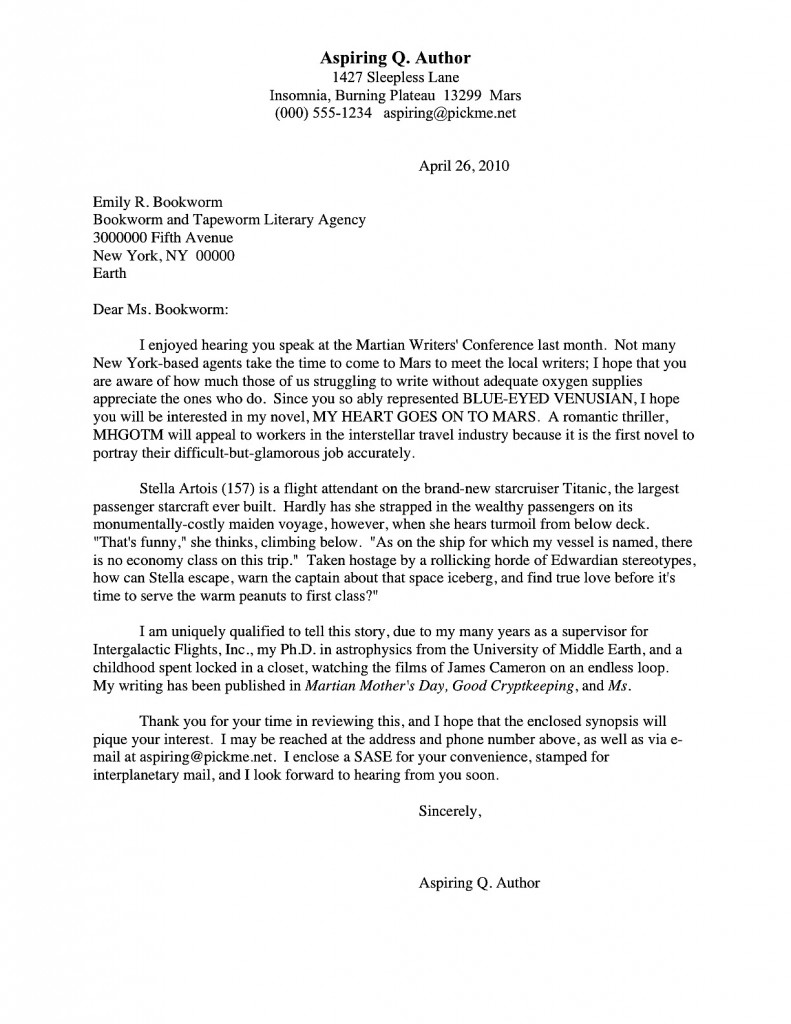

 There is no such thing as a one-size-fits-all query packet. In order not to run afoul of these wildly disparate expectations, a querier must be willing to do a bit of homework and follow individualized directions.
There is no such thing as a one-size-fits-all query packet. In order not to run afoul of these wildly disparate expectations, a querier must be willing to do a bit of homework and follow individualized directions.